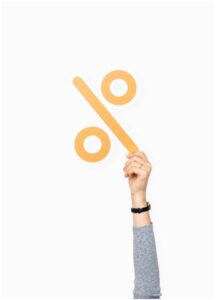
Bond Basics: Understand the Ins and Outs of the Bond Market, Part I

With the volatility of the stock market these days, many of us can get a little queasy when we look at our retirement or brokerage account statements. When stocks (equities) are taking us on a wild roller-coaster ride, the bond market tends to smooth out these swings by reducing volatility in our portfolios.
What is a bond?
A bond is an investment security that is issued by a debtor, which can be public (government bonds) or private (corporate bonds). The bond is essentially a note that pays a coupon, or dividend, over time and is redeemed at a maturity date (although there are some bonds that only realize a gain when redeemed, called zero-coupon bonds).
Bonds also carry risk.
Bonds operate differently than equities but are not without their own unique risks. This two-part series will discuss different kinds of bonds and their characteristics, how returns are calculated, and the risks associated with bonds.
Terminology: know the lingo!
Before we can dive into the characteristics and risks associated with bonds, it is important to know some basic bond terminology and why it’s important. Here we define Dividend or Coupon rates, Current Yield, Yield to Maturity, Yield to Call, and Duration.
 Dividend or Coupon rates
Dividend or Coupon rates
- Dividend or Coupon rates are based on the interest rate the bond promises to pay. Many times, a bond is issued at a value of $1,000. If the bond promises to pay 5%, the coupon value of $50 (5% of $1,000) is paid at least annually on this bond. If the coupon is paid bi-annually, the coupon amount would be $25 every six months.
Current Yield (CY)
- The Current Yield (CY) is the Dividend or Coupon payment divided by the value of the bond. The bond value example above has a current yield of 5%, but what would happen if the value of the bond changed from $1,000 to a higher value or lower value? You may ask, how does this occur? Many times, a bond is traded at a premium (higher than the $1,000 value) or discount (lower than the $1,000 value), which we will explain later. For example, if the bond’s value changed to a premium price of $1020, the Current Yield would drop ($50/$1020=4.9%). Conversely, if the bond were sold at a discount price of $980, the current yield would increase ($50/$980=5.1%).
Yield to Maturity (YTM)
- The Yield to Maturity (YTM) is the rate a bond yields over the life of the bond through redemption. If the bond is sold at a discount, the YTM will be greater than the CY, and if the bond is sold at a premium, the YTM will be less than the CY. The longer the term of the bond, the lower the YTM increase if sold at a discount or lower the YTM decrease if the bond is sold at a premium. An example is as follows:
- A 10-year bond sold at a discount of $980 with a 5% CY, or $50 coupon rate, will have a YTM of 5.26%, while a 20-year bold with the same cost and CY will have a YTM of 5.16%.
Yield to Call (YTC)
- The Yield to Call (YTC) is the rate a bond yields if it is “called.” Some bonds are callable, meaning the issuer of the bond can redeem them or call them back at an earlier date than the maturity date (e.g., a 10-year bond that is callable at 5 years or later). Many times, the called bond would be redeemed at a higher price than the $1,000
original cost, which would be the “call premium.” The YTC will be higher than the CY and the YTM if sold at a discount, and lower than both the CY and YTM if sold at a premium. Here is an example using our bond framework in this article:
- A 10-year callable bond sold at a discount of $980 with a 5% CY, or $50 coupon rate, called at 5 years and redeemed for $1040 will have a YTC of 6.17%
Duration
- A bond’s Duration is the amount of time you need to be invested in a bond to recoup the cost of your initial investment. Bonds with high Current Yields and shorter maturity dates will have shorter durations because you are getting more payments over a smaller time frame.
Tune in next time for Part 2 in our series on bonds!
We will go into more detail on why a bond might be called in the second part of this two-part series, as well as the various types of bonds, and the unique investment risks and rewards of bonds.
The terminology and strategies of bond investing can be confusing at first, but that should not deter you. If you have questions we are here to help! For more information on how we can support you, please visit us at our website, or schedule a free consultation.
Would You Like More Support?
- Do you have a well-defined Investment Policy Strategy that is used to drive your investments in support of a comprehensive financial plan?
- If not, would you like to partner with someone who is used to helping people get through these struggles and (then, with confidence) implement portfolio strategies in a systematic manner while focusing on your desired outcomes?
If so, feel free to send us an email or give us a call. We’d love to have the opportunity to help you find a bit more peace of mind when it comes to investing.
Photo credits: rawpixel.com
F5 Financial
F5 Financial is a fee-only wealth management firm with a holistic approach to financial planning, personal goals, and behavioral change. Through our F5 Process, we provide insight and tailored strategies that inspire and equip our clients to enjoy a life of significance and financial freedom.
F5 Financial provides fee-only financial planning services to Naperville, Plainfield, Bolingbrook, Aurora, Oswego, Geneva, St. Charles, Wheaton, Glen Ellyn, Lisle, Chicago and the surrounding communities; to McDonough, Henry County, Fayette County, Atlanta and the surrounding communities; to Venice, Sarasota, Fort Myers, Port Charlotte, Cape Coral, Osprey, North Port, and the surrounding communities; and nationally.
We'd love to have the opportunity to hear about your situation. Contact us here to schedule an appointment for a consultation.
Learn more about What We Do.
Helping You With
Wealth Preservation – Wealth Enhancement – Wealth Transfer – Wealth Protection – Charitable Giving

 Dividend or Coupon rates
Dividend or Coupon rates original cost, which would be the “call premium.” The YTC will be higher than the CY and the YTM if sold at a discount, and lower than both the CY and YTM if sold at a premium. Here is an example using our bond framework in this article:
original cost, which would be the “call premium.” The YTC will be higher than the CY and the YTM if sold at a discount, and lower than both the CY and YTM if sold at a premium. Here is an example using our bond framework in this article: